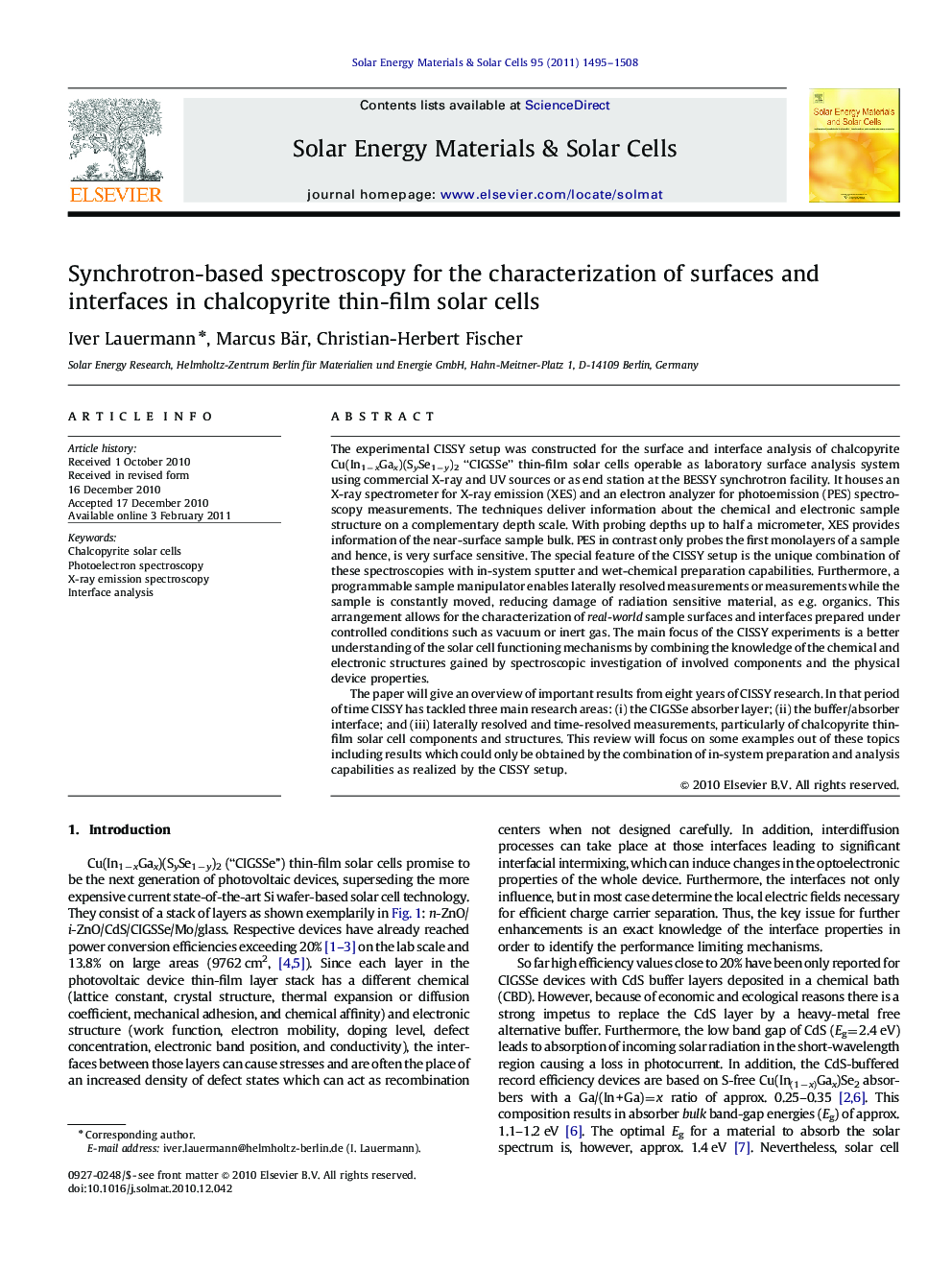| Article ID | Journal | Published Year | Pages | File Type |
|---|---|---|---|---|
| 79428 | Solar Energy Materials and Solar Cells | 2011 | 14 Pages |
The experimental CISSY setup was constructed for the surface and interface analysis of chalcopyrite Cu(In1−xGax)(SySe1−y)2 “CIGSSe” thin-film solar cells operable as laboratory surface analysis system using commercial X-ray and UV sources or as end station at the BESSY synchrotron facility. It houses an X-ray spectrometer for X-ray emission (XES) and an electron analyzer for photoemission (PES) spectroscopy measurements. The techniques deliver information about the chemical and electronic sample structure on a complementary depth scale. With probing depths up to half a micrometer, XES provides information of the near-surface sample bulk. PES in contrast only probes the first monolayers of a sample and hence, is very surface sensitive. The special feature of the CISSY setup is the unique combination of these spectroscopies with in-system sputter and wet-chemical preparation capabilities. Furthermore, a programmable sample manipulator enables laterally resolved measurements or measurements while the sample is constantly moved, reducing damage of radiation sensitive material, as e.g. organics. This arrangement allows for the characterization of real-world sample surfaces and interfaces prepared under controlled conditions such as vacuum or inert gas. The main focus of the CISSY experiments is a better understanding of the solar cell functioning mechanisms by combining the knowledge of the chemical and electronic structures gained by spectroscopic investigation of involved components and the physical device properties.The paper will give an overview of important results from eight years of CISSY research. In that period of time CISSY has tackled three main research areas: (i) the CIGSSe absorber layer; (ii) the buffer/absorber interface; and (iii) laterally resolved and time-resolved measurements, particularly of chalcopyrite thin-film solar cell components and structures. This review will focus on some examples out of these topics including results which could only be obtained by the combination of in-system preparation and analysis capabilities as realized by the CISSY setup.
Graphical AbstractAngle-resolved X-ray emission spectroscopy (AXES) of a Zn(SO)/Cu(Ga,In)Se2 layer stack shows the dependence of the surface sensitivity on the sample/detector angle, demonstrating the ability to obtain depth-dependent compositional information.Figure optionsDownload full-size imageDownload as PowerPoint slideResearch highlights► CISSY: in-system preparation and analysis of chalcopyrite thin-film solar cells. ► Synchrotron access combined with X-ray and UV lab sources. ► Surface-sensitive PES and bulk-sensitive XES provide complementary information. ► Revealing the interdiffusion in chalcopyrite thin-film solar cell stacks. ► Position- and time dependent measurements yield additional crucial information.
